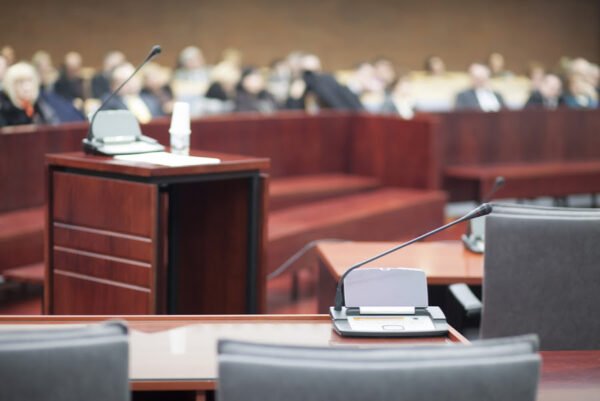No products in the cart.
- Home
- All Passive Income Methods
- Want to See How Much Other People Earned?
- Beginner’s Guide to Passive Income
- My Journey on Passive Income that 99% Population Don’t Hear About
- Litigation Financing – 30% ROI Anyone?
- IPO Under 90 Days!
- IPO Hopeful
- Unicorn Potential?
- An Enjoyable Hobby That Appreciates Too?
- Microlending in Africa
- How You Profit from Beyoncé and Bieber?
- Private Lending
- Tax Lien & Tax Deed in US
- You Can Still Get Bitcoin for $50K???
- A New Strategy with 40%–90% ROI in Year 1
- About Us
- Contact Us
30% ROI Anyone? (9) – Reality is More Dramatic Than Movies
Continuing from the last post, after 30 days, as I expected, the other party chose to go to trial rather than settle.
I didn’t hold out much hope for a settlement within 30 days because, over the years, I’ve encountered many different business sectors. When it comes to money, I’ve encountered more difficult people than in the first half of my life combined. So now, my first principle in facing anything is to assume the other party isn’t reasonable, won’t admit any fault, will not pay, and will fight to the end. Our mental and practical preparations are based on this principle. When we encounter reasonable people, it’s a pleasant surprise. Most of the time, we expect difficult people, which we consider normal.
So, from the start, I was mentally prepared for a trial, expecting it to be over in 2-3 weeks as they said.
And it was. One week for the defendant’s hearing, one week for the plaintiff’s hearing, followed by the judge giving instructions to the jury, and the jury delivering a verdict. Everything wrapped up in less than three weeks, just before a long weekend in the US.
Here’s where it gets interesting.

I received a lengthy update, which I knew meant twists and turns.
First, the key witness disappeared. My first reaction was, is this person still alive?
Later, it was confirmed the witness was alive but unreachable during the entire trial, including by their own lawyer.
Why was this witness critical? Because during their deposition, they had disclosed how their company’s executives instructed to redirect and erase the substantial sales commissions owed to the plaintiff from the system.
This led the defendant’s lawyer to protest, claiming they couldn’t cross-examine the witness, and thus the claim was invalid.
This directly resulted in the judge dismissing $70M in punitive damages for our side 😂🤦.
Next, the judge gave the jury a compensation range of xxM-xxM to decide upon.
The entire jury agreed on the highest amount in the range—except one juror.
This lone juror, reportedly a new immigrant from Europe unfamiliar with large sums of money and the American judicial system (European cases don’t usually award big money, which is why US funds like to take European cases; they often win in Europe but can’t collect, so they bring them to the US where the chances of winning big money are high). The other jurors were long-time residents of the state, very accustomed to multi-million dollar cases.
The two sides couldn’t agree until the long weekend arrived. This one juror single-handedly reduced the compensation by another $20M 😂.
Seeing $90M disappear, I felt disheartened, thinking this was yet another failed venture.
Then I saw the summary: we won the case, but due to the two key factors above, the case only received around $17M in damages, far from the expected $100M+.
But! Even so, after deducting all expenses, the return rate was still 30% in 3 months!!! 😂

Of course, the money hasn’t been received yet. This process will be shared as I continue to go through the process. There are still dozens of days before the judge enters the judgment into the system, and then there are 30 days for the defendant to decide whether to appeal. If they appeal, the process will take another year. However, if they appeal, we will buy insurance to guarantee the initial $17M compensation. At the same time, we will treat the key witness’s disappearance as malicious litigation and add the $70M punitive damages back in, increasing the defendant’s risk significantly. Also, the defendant is reportedly going public, so they will likely reconsider whether to appeal.
The judge reportedly dismissed the $70M punitive damages to avoid giving the defendant an excuse to appeal because the defendant had been dragging the case on maliciously, and the judge was tired of it. The judge hoped that the jury would award between $30M-$40M. However, one juror messed it up 😂.
Overall, everyone thinks the defendant got off too cheaply with the $17M judgment, and since they are going public, they probably won’t appeal. Meanwhile, we have filed a motion asking the judge to calculate the interest on the damages from the start date several years ago instead of now. If we win this motion, we gain millions more; if we lose, no harm done.
Now, we wait a few months to see if the defendant appeals. If they do, it’s another $100M+ case, and the defendant must place the $17M in the lawyer’s trust account to appeal. If they don’t, we will see when they pay.
So, this experience showed me that, in my opinion, the key is the high win rate and the high profit margin which combined together create high tolerance for error. Hence, I decided to continue to investment more gradually. So should I do the first phase with a 30% ROI case group or participate in the second phase with potentially higher, quicker returns from trials? And how to participate? We’ll discuss all that next time, in the final episode.
